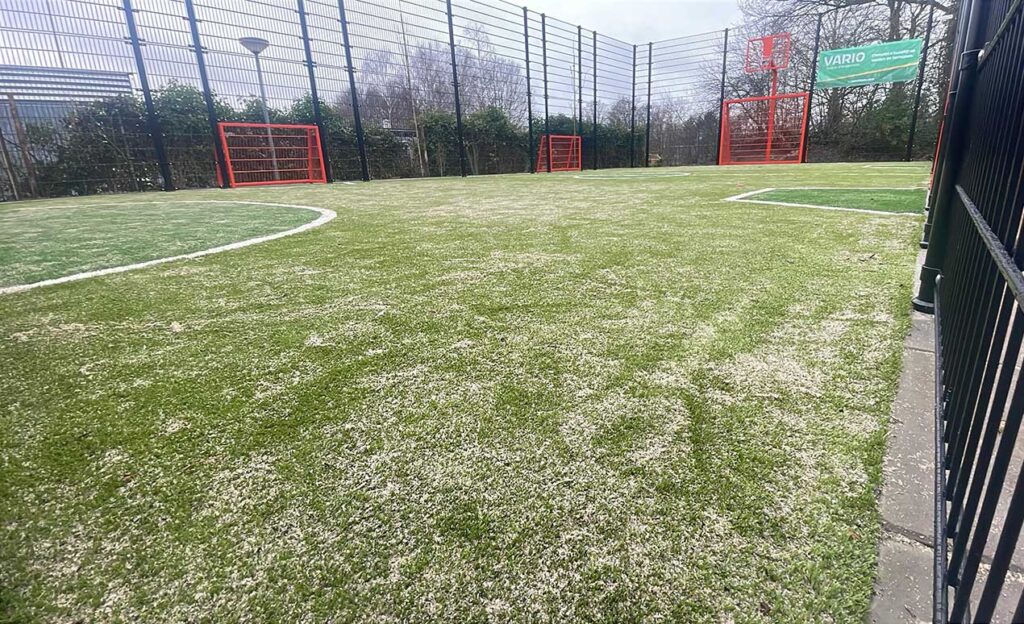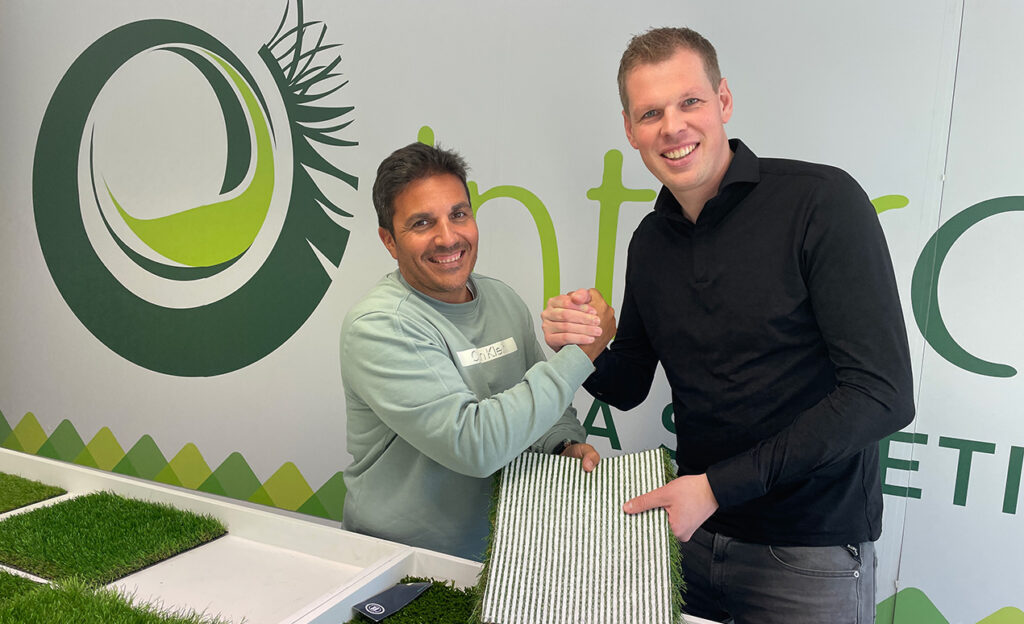All steps taken to make the synthetic turf market sustainable are commendable! Together, we can work towards a better future because tomorrow starts today. This article aims to clarify the differences and highlight the importance of sustainable practices.
IN GENERAL:
In any form of recycling, the fewer different raw materials mixed, the more likely it will end up in high-value applications. When more materials are mixed (e.g., PE & PP), not only does the recycling process become more difficult and/or more expensive, but the recycled material also loses the purity of the original raw material. This devaluation makes it less suitable for a wide range of applications.
High-quality recycling and the potential for reuse in new synthetic turf fibers are only possible if all raw materials, such as PE & PP, are separated or if the product consists of a single raw material, as demonstrated by ONE-DNA™️.
MIX OF MATERIALS:
Artificial grass is composed of several raw materials, such as PE and PP for the grass blades (fibers), backing, and coatings of latex, PU, or, in the latest developments, PP. This mix complicates high-quality recycling. Consider a car, which is also made up of many different materials. Most car materials are valuable enough to warrant a complex but worthwhile recycling process where an end-of-life car is completely dismantled and separated into mono-streams like aluminum, copper, etc., for reuse.
In the case of artificial grass, separating the raw materials is complex, expensive, and often unrewarding due to their “less valuable” nature. Consequently, recycling artificial turf is currently managed only by specialist companies rather than general plastic recycling firms. However, ideally, it should move in that direction, similar to other plastic waste. Given the significant growth in the artificial grass market in recent years, the demand for replacement and recycling will also increase.
To achieve high-quality recycling of artificial turf in the future, we need to introduce products now that make this possible.
HOW DOES IT WORK?
Since almost all artificial turf is composed of a mix of raw materials, recycling often results in downcycling. This is especially true for products with latex or PU coatings, as well as those with PP-coated backings. These products typically use two different polyolefin materials: PE and PP. They consist of PE fibers, sometimes combined with PP thatch, a PP stabilization net, and a PP coating for the tuft lock. While this is an improvement over latex and PU, the value of the raw materials is still lost during the recycling process.
The result, known as Recycled Turf Agglomerate (RTA), no longer retains the purity of the original raw materials and is of significantly lower quality. Consequently, it is of limited use for new applications, mainly thick-walled plastic products such as edging boards, fence posts, picnic tables, etc.
In contrast, ONE-DNA™️ artificial grass is made from a single raw material, PE. This mono-material approach allows the product to retain its value and, when recycled, can be used to make new PE products and even serve as a raw material for new artificial turf. This underscores our commitment to sustainability and closed-loop solutions.

































